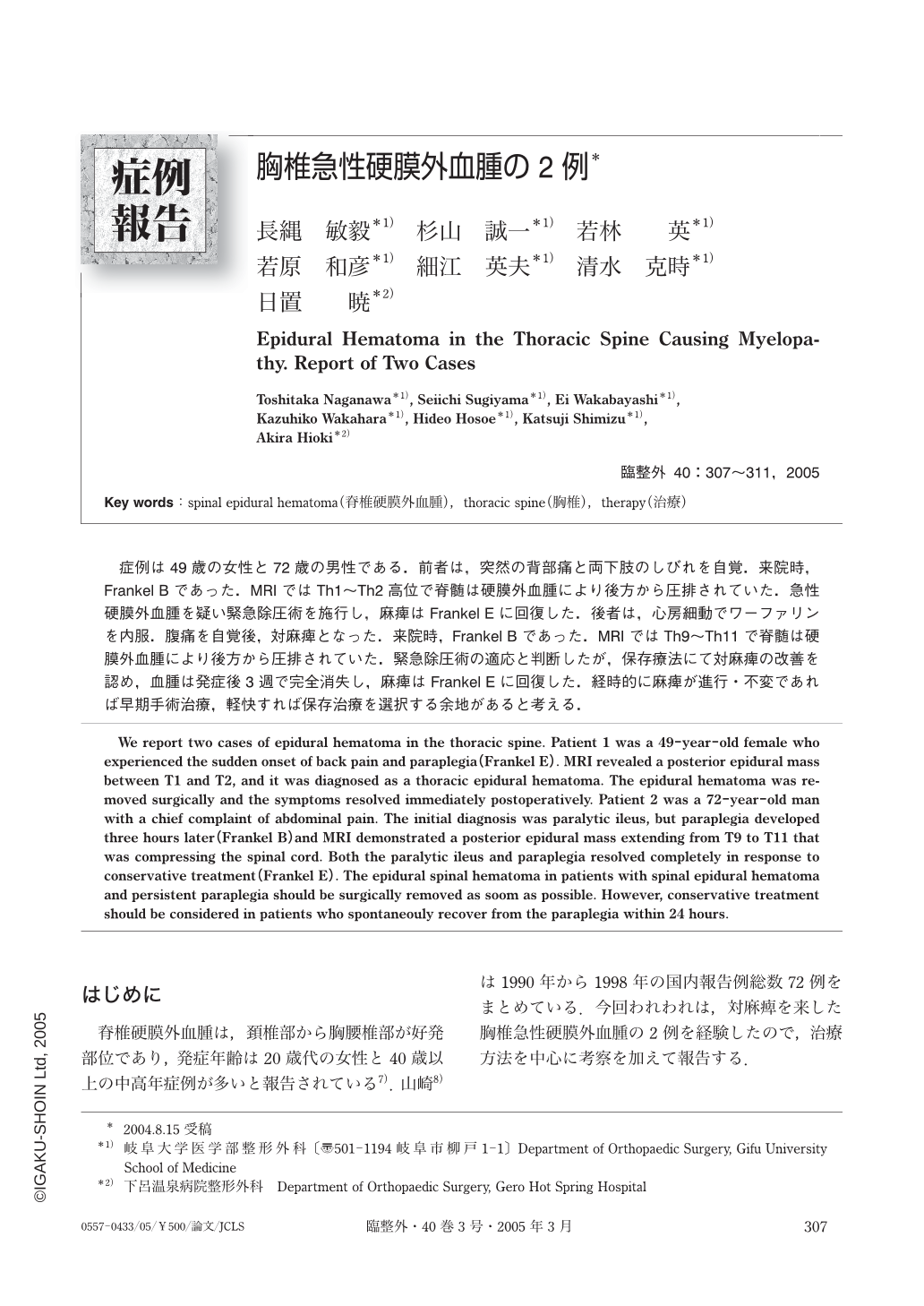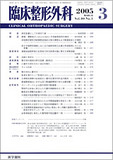Japanese
English
- 有料閲覧
- Abstract 文献概要
- 1ページ目 Look Inside
症例は49歳の女性と72歳の男性である.前者は,突然の背部痛と両下肢のしびれを自覚.来院時,Frankel Bであった.MRIではTh1~Th2高位で脊髄は硬膜外血腫により後方から圧排されていた.急性硬膜外血腫を疑い緊急除圧術を施行し,麻痺はFrankel Eに回復した.後者は,心房細動でワーファリンを内服.腹痛を自覚後,対麻痺となった.来院時,Frankel Bであった.MRIではTh9~Th11で脊髄は硬膜外血腫により後方から圧排されていた.緊急除圧術の適応と判断したが,保存療法にて対麻痺の改善を認め,血腫は発症後3週で完全消失し,麻痺はFrankel Eに回復した.経時的に麻痺が進行・不変であれば早期手術治療,軽快すれば保存治療を選択する余地があると考える.
We report two cases of epidural hematoma in the thoracic spine. Patient 1 was a 49-year-old female who experienced the sudden onset of back pain and paraplegia (Frankel E). MRI revealed a posterior epidural mass between T1 and T2, and it was diagnosed as a thoracic epidural hematoma. The epidural hematoma was removed surgically and the symptoms resolved immediately postoperatively. Patient 2 was a 72-year-old man with a chief complaint of abdominal pain. The initial diagnosis was paralytic ileus, but paraplegia developed three hours later (Frankel B) and MRI demonstrated a posterior epidural mass extending from T9 to T11 that was compressing the spinal cord. Both the paralytic ileus and paraplegia resolved completely in response to conservative treatment (Frankel E). The epidural spinal hematoma in patients with spinal epidural hematoma and persistent paraplegia should be surgically removed as soom as possible. However, conservative treatment should be considered in patients who spontaneouly recover from the paraplegia within 24 hours.

Copyright © 2005, Igaku-Shoin Ltd. All rights reserved.


